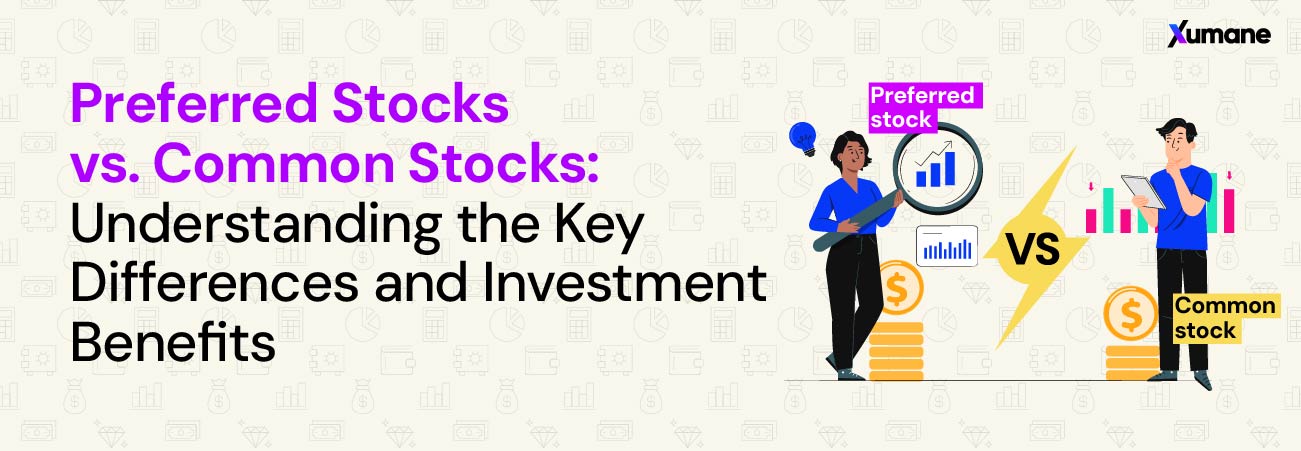
Subscribe to stay ahead with expert insights on ESOPs, smart ownership strategies, and more!
Editor's Note:- Investing in a company’s stock? Understanding the distinction between preferred stock vs. common stock can help you make more informed decisions. Preferred stockholders enjoy priority when it comes to dividends and liquidation payouts but lack voting rights. And common stockholders may receive variable returns and face more risk, but gain voting power and big gains.
A company often rewards its valuable employees and investors by offering them company stocks in the form of common stock and preferred stock. This is commonly adopted by both Public Companies and Private Companies.
Both stocks offer different advantages to the shareholders. Generally, most companies reserve their Common Stocks for employees and founders, while Preferred Stocks are reserved for angel investors and venture capitalists.
Now, let’s understand in detail, from the basics!
The company rewards its valuable employees in the form of company stocks. This practice is done by both Public Companies and Private Companies, where they issue stocks in the form of common stock and preferred stock. Both stocks offer different advantages to the shareholders. Generally, most companies reserve their common stock for employees and preferred stock for investors. Now, let’s understand in detail.
Common Stock represents shares of ownership in a corporation and a claim on profits. Companies generally issue the common stock to the founders and early employees. When an employee owns at least one common stock of the company then the employee receives the power of voting rights on company policies and the ability to elect the board of directors of the organization.
Usually, the common stock performs well in the long run and gives a good return to its shareholders because the value of the stock appreciates, however keeping in mind that dividend income isn’t guaranteed.
Now, let’s understand what preferred stock is and what the pros and cons are that make preferred stock different from common stock.
Preferred Stock is mainly issued to angel investors, and venture capitalists when they are financing the company initially. Mainly, preferred stocks are issued to raise capital from finance companies. Preferred stockholders enjoy the benefit of higher dividends before it issued to common stockholders. Or suppose the company declares itself bankrupt, preferred stockholders are paid from corporate assets before holders of common stock.
Also, Preferred stockholders have a callability feature, much like bonds, that grants the issuer the right to buy back the shares from the market after a specified period.

| Particulars | Common Stock | Preferred Stock |
| Voting rights | Yes, primarily for board elections or company policies | No voting rights |
| Liquidation preferences | Paid after preferred stockholders | Paid before common stockholders |
| Income Stream | Common stock dividends depend on the growth of the company’s financial health. But, if the company is growing and booking high profits, then common stockholders will enjoy higher perks. | Preferred stock dividends are fixed and guaranteed for their stockholders, also allowing their investors to recover missed payments through cumulative dividends. |
| Risk | Higher (Though the potential for high return is higher) | Lower (due to priority payouts) |
| Ideal for | Ideal for long-term investors | Ideal for income-focused investors |
So, after understanding the basic meaning, pros and cons, and the key differences between Preferred Stock and Common Stock. Now you will be thinking about which stock you should invest in preferred or common stock.
So, you see, there’s no one answer to which type of stock you prefer.
And if you’re still asking yourself things like “Is ESOP good or bad” or which stock to go ahead with, that’s where professional equity management helps. Want to simplify your company’s equity management? Contact Us Today!
A primary difference between common stock and preferred stock is that common stock comes with voting rights and good potential for high returns, while preferred stock comes with fixed dividends and are also given priority when it comes to payouts and liquidation (and usually no voting rights).
Preferred shares offer fixed dividends that are paid before dividends on common shares are released. Common stock holders stand a chance to get variable or no dividend at all, depending on the company's performance.
Common stock is riskier but offers high capital gains. Preferred stock is more stable which makes it attractive for investors looking for a sure-shot income from investments.
No, preferred stockholders do not hold voting rights.
No fixed answer! The choice depends solely on your goals. If you're willing to take some risk in lieu of higher returns, common stock is the way to go. But if you're just looking for a fixed dividend from your investment, preferred stock is your best bet.